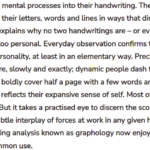Comprehension
English Comprehension- Read the following passage and answer the questions given below it.
Financial Inclusion (FI) is an emerging priority for banks that have nowhere else to go to achieve business growth. The viability of FI business is under question, because while banks and their delivery partners continue to make investments, they haven't seen commensurate returns. In markets like India, most programmes are focused on customer on-boarding, an expensive process which people often find difficult to afford, involving issuance of smart cards to the customers. However, large-scale customer acquisition hasn't translated into large-scale business, with many accounts lying dormant and therefore yielding no return on the bank's investment. For the same reason, Business Correspondent Agents, who constitute the primary channel for financial inclusion, are unable to pursue their activity as a full-time job. One major reason for this state of events is that the customer on-boarding process is often delayed after the submission of documents (required to validate the details of the concerned applicant) by the applicant and might take as long as two weeks. By this time the initial enthusiasm of applicants fades away. Moreover, the delivery partners don't have the knowledge and skill to propose anything other than the most basic financial products to the customer and hence do not serve their banks"' goal of expanding the offering in unbanked markets. Contrary to popular perception, the inclusion segment is not a singular impoverished, undifferentiated mass and it is important to navigate its diversity to identify the right target customers for various programmes. Rural markets do have their share of rich people who do not use banking services simply because they are inconvenient to access or have low perceived value. At the same time, urban markets, despite a high branch density, have multitude of low wage earners outside the financial net. Moreover, the branch timings of banks rarely coincide with the off-work hours of the labour class. Creating affordability is crucial in tapping the unbanked market. No doubt pricing is a tool, but banks also need to be innovative in right-sizing their proposition to convince customers that they can derive big value even from small amounts. One way of doing this is to show the target audience that a bank account is actually a lifestyle enabler, a convenient and safe means to send money to family or make a variety of purchases. Once banks succeed in hooking customers with this value proposition they must sustain their interest by introducing a simple and intuitive user application, ubiquitous access over mobile and other touch points, and adopting a banking mechanism which is not only secure but also reassuring to the customer. Technology is the most important element of financial inclusion strategy and an enabler of all others. The choice of technology is therefore a crucial decision, which could make or mar the agenda. Of the various section criteria, cost is perhaps the most important. This certainly does not mean buying the cheapest package, but rather choosing that solution which by scaling transactions to huge volumes reduces per unit operating cost. An optimal mix of these strategies would no doubt offer an innovative means of expansion in the unbanked market
Congratulations - you have completed English Comprehension- Read the following passage and answer the questions given below it. . You scored %%SCORE%% out of %%TOTAL%%. Your performance has been rated as %%RATING%%
Your answers are highlighted below.





